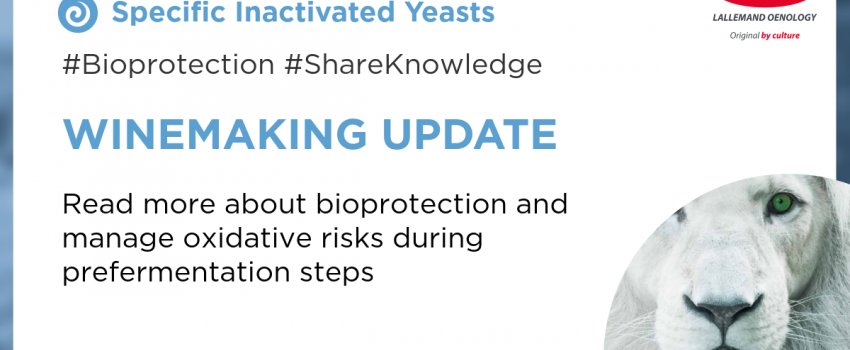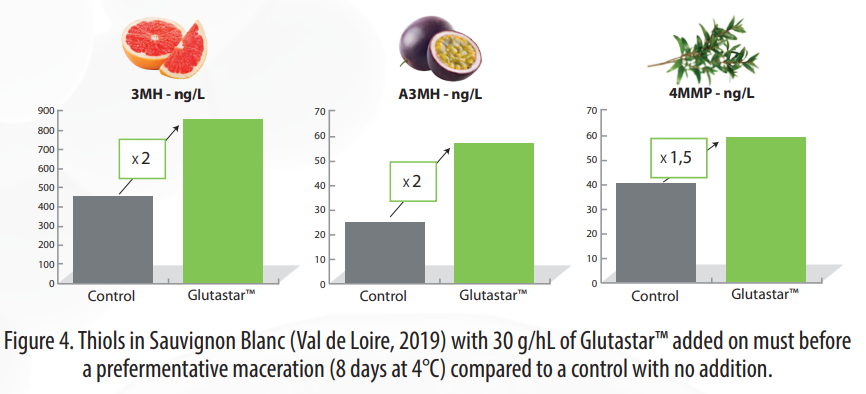
Managing oxidative risk with biological tools
Publiée le 25/02/2021 10:55How to manage the oxidative risk all along the winemaking process?
Throughout the winemaking process, several steps are known as strategic key points where oxidation mechanisms can occur. The commonly used compounds to protect must and wine from oxidation are sulfites (SO2). Nowadays, winemakers are trying to decrease the SO2 concentrations during the winemaking process, and the use of biological solutions is an excellent option.
Our latest Winemaking Update edition will focus on how to manage the oxidative risk all along the winemaking process. The first of this 2 part-series spotlights biological tools available to winemakers to control oxidation prior to the onset of alcoholic fermentation.

Recent research work in collaboration with the IUVV in Dijon led to the development of GLUTASTAR™, a new specific inactivated yeast obtained through the combination of a unique wine yeast strain (patent pending) and a specific process leading to the optimal biosynthesis of glutathione by the yeasts ant its accumulation in the intracellular medium.
This in-depth study has shown that GLUTASTAR™ has a distinctive nucleophilic fingerprint conferring a very high antioxidant action, because it possesses the highest content of intracellular glutathione and a unique pool of antioxidant peptides. They all act in synergy and ensure longer protection of the wine sensory profile.
In fact, some wines are more sensitive to oxidation such as aromatic white wines and more particularly those rich in thiols such as Sauvignon blanc.
Increasing naturally the concentration of nucleophiles (such as Gluthatione and other specific antioxydant peptides) in wine improves the wine oxidative stability by scavenging the quinones that are powerful oxidants and preserves aromatic thiols of the wine.
Results obtained with GLUTASTAR™, show that the thiols concentration in Sauvignon Blanc was significantly higher even up to 5 months after bottling thus indicating a greater oxidative stability and aroma preservation throughout the ageing.

GLUTASTAR™ is a great tool for your prefermentative steps in white and rosé wine to protect from oxidation and can be part of an overall strategy of bioprotection.
For more information, read our Winemaking Update - https://www.lallemandwine.com/wp-content/uploads/2021/02/WUP-Oxidation-Glutastar-ENG-002.pdf
And watch our video to learn how Glutastar manages oxidative risks: https://www.youtube.com/watch?v=XBbQAiYskKQ


